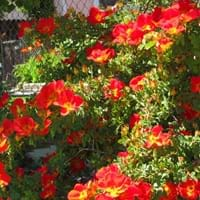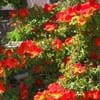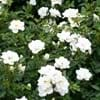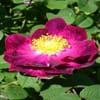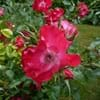Life Span
Perennial
Perennial
Type
Flowering Plants, Ornamental Plants, Shrubs
Tree
Origin
Not Available
Northeastern United States, Mid-Atlantic United States, Southeastern United States, Central United States
Types
Not Available
Ardis, Arnold, Aureomarginatum
Habitat
Foot Hills
Bluffs, low mountains, Moist Soils, Woodlands
USDA Hardiness Zone
Not Available
5-9
AHS Heat Zone
Not Available
9-2
Sunset Zone
Not Available
1a, 1b, 2a, 2b, 3a, 3b, 4, 5, 6, 7, 8, 9, 10, 11, 12, 14, 15, 16, 17, 18, 19, 20, 21, 22, 23
Habit
Clump-Forming
Pyramidal
Flower Color
Orange Red, Yellow
Orange, Light Yellow
Flower Color Modifier
Bicolor
Bicolor
Fruit Color
Non Fruiting Plant
Lime Green, Brown
Leaf Color in Spring
Green
Green, Light Green
Leaf Color in Summer
Green, Dark Green
Green
Leaf Color in Fall
Dark Green
Yellow, Light Yellow, Yellow green
Leaf Color in Winter
Dark Green
Not Available
Leaf Shape
Pinnate
Irregular
Plant Season
Spring, Summer, Fall
Spring, Fall
Sunlight
Full Sun, Partial Sun
Full Sun, Partial Sun
Growth Rate
Medium
Medium
Type of Soil
Loam, Sand
Clay, Loam
The pH of Soil
Acidic, Neutral
Acidic, Neutral
Soil Drainage
Well drained
Average
Bloom Time
Spring, Late Spring, Early Summer, Summer, Late Summer, Early Fall, Fall
Late Spring
Repeat Bloomer
Not Available
No
Tolerances
Drought
Soil Compaction
Where to Plant?
Container, Ground, Pot
Ground
How to Plant?
Cuttings
Seedlings
Plant Maintenance
Medium
Low
Watering Requirements
Average Water Needs
Do Not over Water, Keep the ground moist but not water-logged, Requires regular watering
In Summer
Lots of watering
Ample Water
In Spring
Moderate
Moderate
In Winter
Average Water
Average Water
Soil pH
Acidic, Neutral
Acidic, Neutral
Soil Type
Loam, Sand
Clay, Loam
Soil Drainage Capacity
Well drained
Average
Sun Exposure
Full Sun, Partial Sun
Full Sun, Partial Sun
Pruning
Remove damaged leaves, Remove dead branches, Remove dead leaves
Prune ocassionally, Remove dead branches
Fertilizers
All-Purpose Liquid Fertilizer
All-Purpose Liquid Fertilizer, fertilize in spring, Fertilize the soil instead of direct applying, Mulch
Pests and Diseases
Beetles, Black Spot, Caterpillars, Downy mildew, Mosaic viruses, Powdery mildew, Rust, Scale insects, Thripes
fusarium canker, nectria canker, yellow-poplar weevil
Plant Tolerance
Drought
Soil Compaction
Flower Petal Number
Double
Not Available
Edible Fruit
Not Available
No
Foliage Texture
Medium
Coarse
Foliage Sheen
Glossy
Matte
Invasive
Not Available
No
Self-Sowing
Not Available
Yes
Attracts
Birds, Butterflies
Birds
Allergy
Rash
no allergic reactions
Aesthetic Uses
Showy Purposes
Showy Purposes
Beauty Benefits
Not Available
Not Available
Environmental Uses
Air purification
Shadow Tree, Shelter for wildlife
Medicinal Uses
Not Available
Arthritis, Digestion problems, Fever, Inflammation, Wounds
Part of Plant Used
Flowers
Whole plant
Other Uses
Oil is used in perfume, soaps, creams, etc.
Food for animals, Grown for shade, Used as Ornamental plant, Used in Furniture
Used As Indoor Plant
Yes
No
Used As Outdoor Plant
Yes
Yes
Garden Design
Container, Cutflower, Feature Plant, Foundation, Mixed Border, Topiary / Bonsai / Espalier
Feature Plant, Shade Trees, Street Trees
Botanical Name
Rosa foetida
LIRIODENDRON tulipifera
Common Name
Austrian briar, Persian yellow rose, Austrian copper rose
Tulip Poplar, Yellow Poplar
In Hindi
Austrian copper rose
ट्यूलिप पेड़
In German
Die Gelbe Rose, Fuchs-Rose, Wachs-Rose, Persische Gold-Rose, Austrian Briar
Tulpenbaum
In French
Le rosier fétide
tulipier
In Spanish
Rosa foetida
árbol de tulipán
In Greek
Austrian copper rose
δέντρο τουλίπα
In Portuguese
Rosa fétida
árvore de tulipa
In Polish
Róża żółta
tulipanowiec
In Latin
Austrian copper rose
Tulipa arbore
Phylum
Magnoliophyta
Tracheophyta
Class
Magnoliopsida
Magnoliopsida
Order
Rosales
Magnoliales
Family
Rosaceae
Magnoliaceae
Clade
Not Available
Angiosperms, Magnoliids
Tribe
Not Available
Not Available
Subfamily
Not Available
Not Available
Number of Species
Not Available
Season and Care of Austrian Copper Rose and Tulip Tree
Season and care of Austrian Copper Rose and Tulip Tree is important to know. While considering everything about Austrian Copper Rose and Tulip Tree Care, growing season is an essential factor. Austrian Copper Rose season is Spring, Summer and Fall and Tulip Tree season is Spring, Summer and Fall. The type of soil for Austrian Copper Rose is Loam, Sand and for Tulip Tree is Clay, Loam while the PH of soil for Austrian Copper Rose is Acidic, Neutral and for Tulip Tree is Acidic, Neutral.
Austrian Copper Rose and Tulip Tree Physical Information
Austrian Copper Rose and Tulip Tree physical information is very important for comparison. Austrian Copper Rose height is 150.00 cm and width 170.00 cm whereas Tulip Tree height is 1,830.00 cm and width 1,070.00 cm. The color specification of Austrian Copper Rose and Tulip Tree are as follows:
Austrian Copper Rose flower color: Orange Red and Yellow
Austrian Copper Rose leaf color: Green
Tulip Tree flower color: Orange and Light Yellow
- Tulip Tree leaf color: Green and Light Green
Care of Austrian Copper Rose and Tulip Tree
Care of Austrian Copper Rose and Tulip Tree include pruning, fertilizers, watering etc. Austrian Copper Rose pruning is done Remove damaged leaves, Remove dead branches and Remove dead leaves and Tulip Tree pruning is done Prune ocassionally and Remove dead branches. In summer Austrian Copper Rose needs Lots of watering and in winter, it needs Average Water. Whereas, in summer Tulip Tree needs Ample Water and in winter, it needs Average Water.
